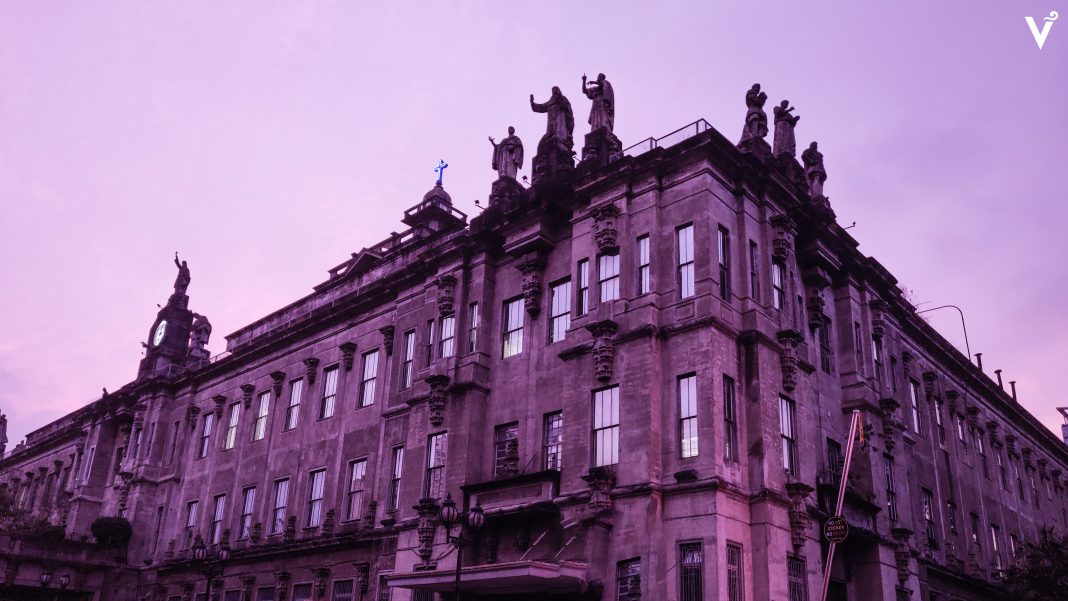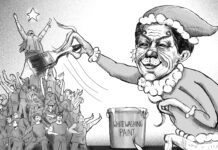AT THE start of 2020, there was a hope that everything would be fine if not finer. Being a double date that comes only every 101 years, 2020 seemed like the perfect year to set goals and dream big. But that has not been the case; it has in fact turned out to be quite enervating. It has been a year of disaster after disaster.
Because of the global Covid-19 pandemic, everyday routines and lives have been put on lockdown; graduation rites were put on hold; concerts and gatherings have been banned; education has shifted online; many have gone jobless. And worst of all, many have lost their lives due to the pandemic.
With outlook for the Philippines obtaining the vaccines to check the pandemic not exactly bright, there seems no end in sight to our tribulation. The pessimism has spilled over to Christmas, traditionally the most celebratory season in the Philippines.
But as Vice Rector Fr. Isaias Tiongco, O.P. said during this year’s Paskuhan Mass, not even a pandemic could take away Christmas: “In spite of inconveniences, Christmas can never be canceled nor taken away from us, not even by this cruel Covid-19 disease… with hope, we can live in peace, in faith and in love.”
So instead of moping around, we should take joy in the fact that we have made it to Christmas safe and sound. Now is a good opportunity to rediscover the essence of Christmas. Shorn of the crass materialism of previous seasons, Christmas this year will be a much simpler—and more meaningful—affair. In a year characterized by deaths and more deaths, a more contemplative Christmas will be an occasion not for further mourning but for a return to basics.
Indeed, what does Christ’s nativity mean for us who suffer the wages of death? its deeper meaning is symbolized by the gift of one of the magi: myrrh, an ancient embalming oil that prefigured the resurrection of the infant of Bethlehem.
Indeed the native son shows the triumph of the resurrection. As John Donne wrote: “One short sleep past, we wake eternally / And death shall be no more; Death, thou shalt die.”
As the new people of the book, as the people of both the nativity and the resurrection, we are also the people of “Tria Haec,” the three theological virtues embodied by the famous statue of Francesco Monti atop the UST Main Building.
Faith is defined by St. Thomas Aquinas as the habit of the mind whereby eternal life is begun in us, making the will assent to what is not visible or apparent. St. Thomas says that faith “is made more certain by believing God Himself Who speaks,” that is, Jesus Christ. The importance of the Nativity is underscored because it shows the Incarnation, God becoming man. As St. Augustine says, “In order that man might journey more trustfully toward the truth, the Truth itself, the Son of God, having assumed human nature, established and founded faith.”
The Nativity too embodies Hope. As St. Augustine says, “Nothing was so necessary for raising our hope as to show us how deeply God loved us. And what could afford us a stronger proof of this than that the Son of God should become a partner with us of human nature?”
And the Nativity and the Incarnation too are what motivate us to love. Since Christ became a weak and helpless infant to show God’s love of humankind, we are bound to love in return. As Augustine said, “If we have been slow to love, at least let us hasten to love in return.”
All three have been in plentiful evidence during this most difficult year of the pandemic, volcanic eruptions, and typhoons. And they should even be more plentiful in this so-called Season of Joy.
As Father Vice Rector said, “Christmas should be as joyful as ever and full of hope and expectation, bringing us the true peace that can only come from the Christ Child, our Prince of Peace.”














